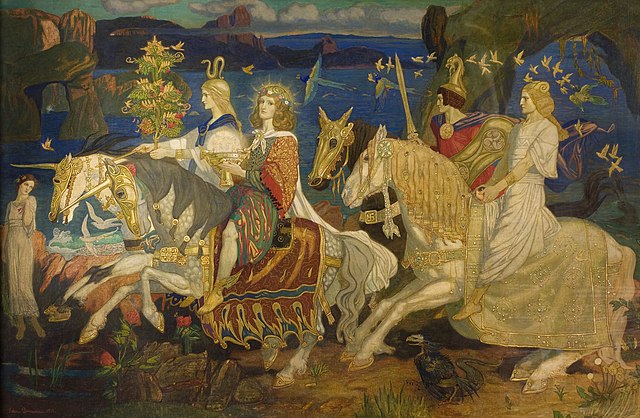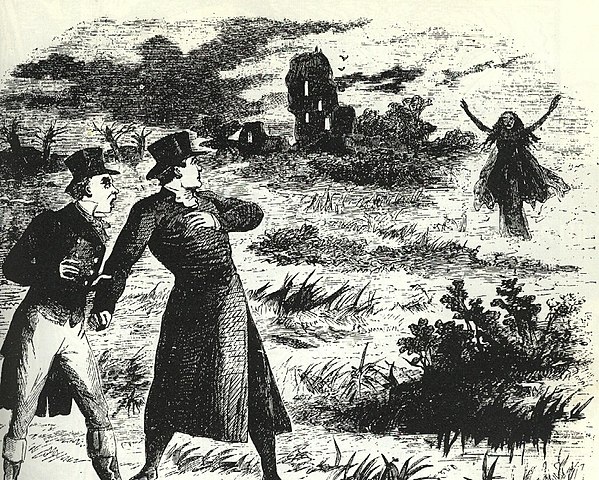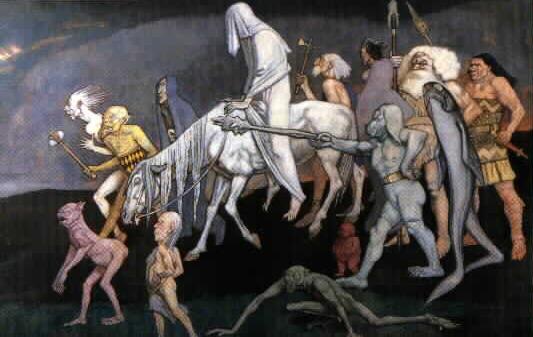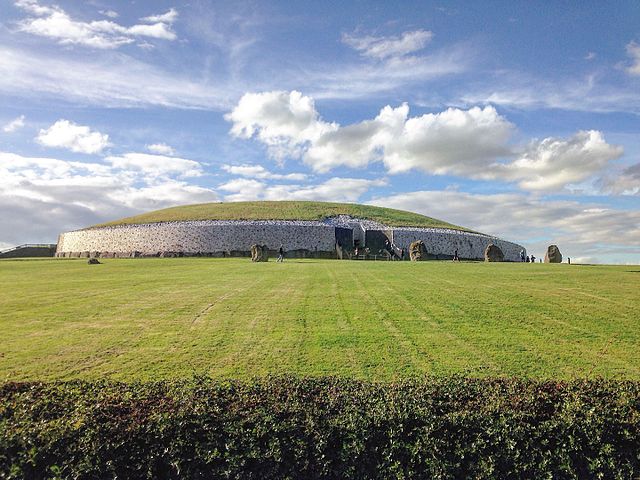Irish Fairies: Guardians of Nature and Their Mystical Homes
Irish fairies are enchanting beings that have captured people’s imaginations for centuries. Rooted deeply in Ireland’s rich folklore, these magical creatures are often seen as guardians of nature and the spirits of the land. They are not just characters from stories; they represent a connection to Ireland’s past, blending history, mythology, and culture.
The fascination with fairies endures to this day, with many believing in their existence and their power. Irish fairies come in many forms, from mischievous leprechauns to graceful banshees, each with unique stories and attributes. They remind us of the magic in the world around us, and their place in Irish cultural heritage helps keep ancient traditions alive, making them an important part of Ireland’s identity.
Whether you’re hearing tales by the fireside or exploring the lush landscapes where they are said to dwell, the allure of Irish fairies continues to inspire wonder and curiosity in the hearts of young and old.
Table of Contents
The Origin of Irish Fairies
Historical Background

Irish fairies have their roots in ancient Celtic mythology. Long ago, the Irish people believed in a race of supernatural beings known as the Tuatha Dé Danann. These beings were seen as powerful gods and goddesses who ruled the land, bringing knowledge, magic, and prosperity. When the Celts settled in Ireland, they viewed the Tuatha Dé Danann as protectors of nature and the spirit world.
As time passed, these beings’ stories transformed into tales about fairies. Instead of powerful gods, fairies began to be seen as more minor, more playful creatures. They were believed to inhabit hidden places like fairy mounds, lush forests, and shimmering lakes, where they watched over the land and its people.
Evolution Over Time
As Ireland changed over the centuries, so did the perception of fairies. With the arrival of Christianity, many old beliefs began to blend with new ideas. Fairies became less like deities and more like mischievous spirits. People started to see them as beings who could bring both good fortune and trouble, depending on how they were treated.
Folklore developed around these fairy beings, with tales of their tricks, gifts, and interactions with humans. This shift made fairies more relatable and accessible, allowing them to become a beloved part of Irish culture. Today, they are often celebrated in stories, festivals, and even modern literature, continuing to enchant people of all ages. Their evolution reflects Irish history’s rich tapestry and imagination’s enduring power.
Superstitions About Irish Fairies
Common Beliefs

Throughout Irish history, people have held a variety of beliefs about fairies. One of the most common superstitions is that disturbing fairy mounds, known as sídhe, can bring bad luck. These mounds are believed to be the homes of fairies, and many locals would avoid them to show respect. It was thought that you might face their wrath if you accidentally harmed a fairy dwelling.
Another widespread belief is that leaving offerings for the fairies could help win their favour. Many people would place small gifts, like milk, bread, or coins, near fairy mounds or in gardens. These offerings were seen as a way to please the fairies and prevent mischief, ensuring harmony between humans and the magical beings of the land.
Asking permission before taking cuttings from Fairie trees such as Blackthorn is still done today. Blackthorn was traditionally used to craft Irish walking sticks known as Shillelaghs. The blackthorn was said to snag passers by with its thorns, permitting those who were snagged to take a branch from it for crafting into a walking stick. It was believed that if permission wasn’t given, then bad things would happen to those who took a cutting.
Cautionary Tales and Practices
Irish folklore is filled with cautionary tales about encounters with fairies. One common story tells of a traveller who stumbled into a fairy ring—a circular area where grass grows differently, often surrounded by mushrooms. Those who danced in the ring or disrespected it were said to be taken to the fairy realm, never to return. This story served as a warning to respect fairy spaces and avoid provoking their spirits.
People practised various traditions to protect themselves from fairy mischief. For instance, some would carry charms or wear specific colours to ward off fairies. Others believed that carrying a piece of iron, like a nail or a key, could help keep fairies at bay, as they were thought to dislike iron. These tales and practices highlight the deep-rooted belief in the power of fairies and the need to coexist with these magical beings respectfully.
Where Irish Fairies Live
Typical Habitats
Irish fairies are known to inhabit some of nature’s most enchanting places. They are often associated with fairy mounds, or sídhe, grassy hills or earthen structures believed to be gateways to their magical realm. These mounds can be found all over Ireland and are often surrounded by lush greenery and vibrant flowers, making them seem otherworldly.
In addition to fairy mounds, fairies are also said to dwell in forests, lakes, and meadows. They enjoy hiding in peaceful and beautiful places to watch over the natural world. Fairy rings, which are circular patterns of mushrooms or differently coloured grass, are another sign of their presence. People believe that stepping into these rings can lead to encounters with fairies or even whisk you away to their realm.
The Otherworld

The Otherworld is a mystical place where fairies are said to reside. It is often described as a beautiful, magical land filled with eternal sunshine, vibrant flowers, and endless feasts. Unlike the human world, the Otherworld is timeless and untouched by the troubles of everyday life.
In many stories, the Otherworld is seen as a parallel universe that can be accessed through specific locations, like fairy mounds or lakes. It is a place of joy where fairies celebrate and dance. However, it is also a realm where time behaves differently. A person who visits the Otherworld might return to the human world only to find that many years have passed.
The concept of the Otherworld adds to the allure of Irish fairies, making them playful spirits and powerful beings connected to a realm of wonder and magic. These enchanting habitats and the mysterious Otherworld are central to the stories and beliefs surrounding Irish fairies, inviting curiosity and fascination.
Access Points to the Fairy Underworld
Geographical Hotspots
In Ireland, certain locations are believed to be gateways to the fairy underworld, where humans can connect with these magical beings. Some of the most famous geographical hotspots include:
- Hill of Tara: This ancient site, once a royal seat of power, is steeped in mythology and is said to be a significant entrance to the Otherworld. Many legends speak of fairies dancing on the hill under the moonlight, making it a popular spot for those seeking to connect with the fairy realm.
- Lough Derg: This beautiful lake is known for its mystical properties. The fairies are believed to hold their gatherings here, and the waters are said to have healing powers. Locals often share stories of strange occurrences and sightings of fairies around the lake, making it a place of wonder and intrigue.
- Brú na Bóinne: This ancient burial site, home to the famous passage tombs of Newgrange and Knowth, is another hotspot linked to fairy lore. The tombs are thought to be portals to the Otherworld, where fairies and ancient spirits dwell. Visitors often feel a sense of magic and history when they explore this sacred site.
- Oweynagat (the Cave of the Cats): Oweynagat, often referred to as the Cave of the Cats, is a significant site in Irish folklore, believed to be one of the gateways to the fairy underworld. Located in County Roscommon, this ancient cave holds a rich tapestry of mythology and mystery. It is named after the legendary feline guardians that are said to protect the entrance to the Otherworld.
Legends and Folklore
The belief in access points to the fairy underworld is rich with legends and folklore. Many stories recount how brave individuals ventured into these enchanted places, sometimes experiencing extraordinary encounters.
For example, one tale tells of a young man who wandered into a fairy ring at the Hill of Tara. He was drawn into a dazzling dance with the fairies, losing track of time. When he finally returned to the human world, he discovered many years had passed, and his family and friends had long since given up searching for him.
Another legend speaks of a traveller who visited Lough Derg. He saw fairies celebrating on the shore and, unable to resist their charm, joined their festivities. Though he enjoyed the revelry, he was warned never to eat or drink anything offered by the fairies, for it would tie him to their world forever.
These tales of access points to the fairy underworld highlight the deep connection between Irish folklore and the landscape. They remind us that reality and magic often intertwine in the world of fairies, inviting those who believe in exploring the mysteries that lie beyond our own.
Summary
Irish fairies are enchanting beings that have captivated people for generations. With their roots in ancient mythology and rich traditions, they play a significant role in Ireland’s cultural heritage.
From their mystical homes in fairy mounds and lush landscapes to the magical Otherworld they inhabit, fairies continue to spark curiosity and imagination.
The stories and beliefs surrounding Irish fairies remind us of the magic in our world. They teach us to respect nature and the unseen forces that shape our lives.
As you explore these fascinating myths, consider visiting some of the geographical hotspots mentioned, like the Hill of Tara or Lough Derg. Experiencing these magical locations can deepen your connection to Irish folklore and even reveal a touch of fairy magic in your own life.
Whether you’re drawn to their whimsical charm or the rich stories they inspire, Irish fairies invite you to believe in the wonder that lies just beyond the ordinary.

